Chemistry > AQA Questions and Marking Scheme > AQA GCSE COMBINED SCIENCE: TRILOGY 8464/C/1H Higher Tier Chemistry Paper 1H Question Paper + Mark sc (All)
AQA GCSE COMBINED SCIENCE: TRILOGY 8464/C/1H Higher Tier Chemistry Paper 1H Question Paper + Mark scheme [MERGED] June 2022 *jun228464c1H01* IB/M/Jun22/E10 8464/C/1H For Examiner’s Use Question Mark 1 2 3
Document Content and Description Below
AQA GCSE COMBINED SCIENCE: TRILOGY 8464/C/1H Higher Tier Chemistry Paper 1H Question Paper + Mark scheme [MERGED] June 2022 *jun228464c1H01* IB/M/Jun22/E10 8464/C/1H For Examiner’s Use Qu... estion Mark 1 2 3 4 5 6 7 TOTAL Time allowed: 1 hour 15 minutes Materials For this paper you must have: • a ruler • a scientific calculator • the periodic table (enclosed). Instructions • Use black ink or black ball-point pen. • Pencil should only be used for drawing. • Fill in the boxes at the top of this page. • Answer all questions in the spaces provided. • If you need extra space for your answer(s), use the lined pages at the end of this book. Write the question number against your answer(s). • Do all rough work in this book. Cross through any work you do not want to be marked. • In all calculations, show clearly how you work out your answer. Information • The maximum mark for this paper is 70. • The marks for questions are shown in brackets. • You are expected to use a calculator where appropriate. • You are reminded of the need for good English and clear presentation in your answers. Please write clearly in block capitals. Centre number Candidate number Surname Forename(s) Candidate signature I declare this is my own work. GCSE COMBINED SCIENCE: TRILOGY Higher Tier Chemistry Paper 1H H 2 *02* IB/M/Jun22/8464/C/1H Do not write outside the There are no questions printed on this page box DO NOT WRITE ON THIS PAGE ANSWER IN THE SPACES PROVIDED 3 *03* Turn over ► IB/M/Jun22/8464/C/1H Do not write outside the box 0 1 This question is about salts. Green copper carbonate and sulfuric acid can be used to produce blue copper sulfate crystals. 0 1 . 1 Excess copper carbonate is added to sulfuric acid. Give three observations you would make. [3 marks] 1 2 3 0 1 . 2 How can the excess copper carbonate be removed? [1 mark] 0 1 . 3 The pH of the solution changes during the reaction. What is the pH of the solution at the end of the reaction? [1 mark] pH = 0 1 . 4 Copper carbonate and sulfuric acid react to produce copper sulfate. What type of reaction is this? [1 mark] 4 *04* IB/M/Jun22/8464/C/1H Do not write outside the 0 1 box . 5 Ammonium nitrate is a salt. Figure 1 shows the maximum mass of ammonium nitrate that can dissolve in 100 cm3 of water at different temperatures. Figure 1 5 *05* Turn over ► IB/M/Jun22/8464/C/1H Do not write outside the box 9 A student adds ammonium nitrate to water at 80 °C until no more dissolves. The student cools 100 cm3 of this solution of ammonium nitrate from 80 °C to 20 °C to produce crystals of ammonium nitrate. Determine the mass of ammonium nitrate that crystallises on cooling 100 cm3 of this solution from 80 °C to 20 °C [3 marks] Mass = g Turn over for the next question 6 *06* IB/M/Jun22/8464/C/1H Do not write outside the box 0 2 This question is about electrolysis. Figure 2 shows the apparatus used to investigate the electrolysis of potassium sulfate solution. Figure 2 0 2 . 1 Potassium sulfate contains K+ and SO4 2– ions. What is the formula of potassium sulfate? [1 mark] Tick () one box. KSO4 K2SO4 K(SO4)2 K2(SO4)2 7 *07* Turn over ► IB/M/Jun22/8464/C/1H Do not write outside the 0 2 box . 2 What are the volumes of gases collected in the electrolysis experiment? Use Figure 2. [1 mark] Volume of hydrogen = cm3 Volume of oxygen = cm3 0 2 . 3 A student made the following hypothesis: ‘The volumes of gases collected in this electrolysis experiment are in the same ratio as hydrogen atoms to oxygen atoms in a water molecule.’ Explain how the volumes of gases collected in the experiment in Figure 2 support the student’s hypothesis. Use your answer to Question 02.2 [2 marks] Question 2 continues on the next page 8 *08* IB/M/Jun22/8464/C/1H Do not write outside the box 8 0 2 . 4 The experiment is repeated 4 times. The volumes of oxygen collected in the 4 experiments are: 6 cm3 9 cm3 10 cm3 11 cm3 The mean volume of oxygen collected in the 4 experiments is 9 cm3 The measure of uncertainty is the range of a set of measurements about the mean. What is the measure of uncertainty in the 4 experiments? [1 mark] Tick () one box. 9 ± 1 cm3 9 ± 2 cm3 9 ± 3 cm3 0 2 . 5 The potassium sulfate solution has 0.86 g of potassium sulfate dissolved in 25 cm3 of water. Calculate the mass of potassium sulfate needed to make 1.0 dm3 of solution. [3 marks] Mass = g 9 *09* Turn over ► IB/M/Jun22/8464/C/1H Do not write outside the box 6 0 3 Plan an investigation to find the order of reactivity of three metals. You should use the temperature change when each metal reacts with hydrochloric acid. [6 marks] Turn over for the next question 10 *10* IB/M/Jun22/8464/C/1H Do not write outside the There are no questions printed on this page box DO NOT WRITE ON THIS PAGE ANSWER IN THE SPACES PROVIDED 11 *11* Turn over ► IB/M/Jun22/8464/C/1H Do not write outside the box 0 4 This question is about Group 7 elements. 0 4 . 1 What are the Group 7 elements known as? [1 mark] 0 4 . 2 Why do Group 7 elements react in similar ways? [1 mark] 0 4 . 3 Figure 3 shows the structure of a molecule of chlorine oxide. Figure 3 What is the molecular formula of the chlorine oxide molecule in Figure 3? [1 mark] Question 4 continues on the next page 12 *12* IB/M/Jun22/8464/C/1H Do not write outside the Figure 4 shows the melting points of some Group 7 elements. box Figure 4 0 4 . 4 The melting point of fluorine is –220 °C Complete Figure 4. You should: • complete the scale on the y-axis • draw the bar for the melting point of fluorine. [2 marks] 13 *13* Turn over ► IB/M/Jun22/8464/C/1H Do not write outside the box 10 0 4 . 5 Explain the trend in the melting points of the Group 7 elements. Use Figure 4. [3 marks] 0 4 . 6 What is the state symbol for bromine at –50 °C? Use Figure 4. [1 mark] Tick () one box. (aq) (g) (l) (s) 0 4 . 7 Evaporation and boiling occur at the surface of bromine at its boiling point. Name one more process that happens at the surface of bromine at its boiling point. [1 mark] Turn over for the next question 14 *14* IB/M/Jun22/8464/C/1H Do not write outside the box 0 5 This question is about structure and bonding. 0 5 . 1 Figure 5 represents part of a carbon molecule. [Show More]
Last updated: 11 months ago
Preview 1 out of 51 pages

Reviews( 0 )
Document information
Connected school, study & course
About the document
Uploaded On
Jun 03, 2023
Number of pages
51
Written in
Additional information
This document has been written for:
Uploaded
Jun 03, 2023
Downloads
0
Views
105


.png)
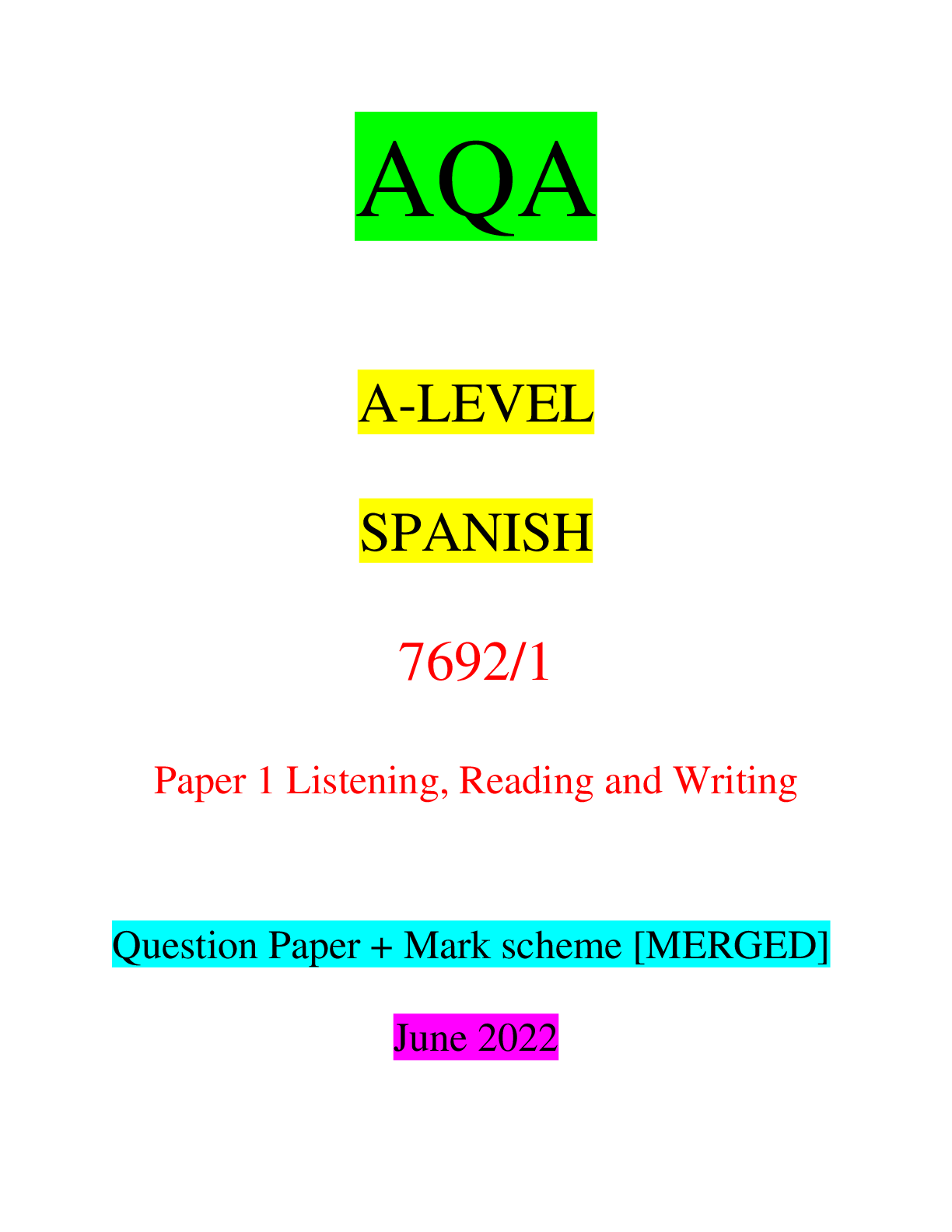
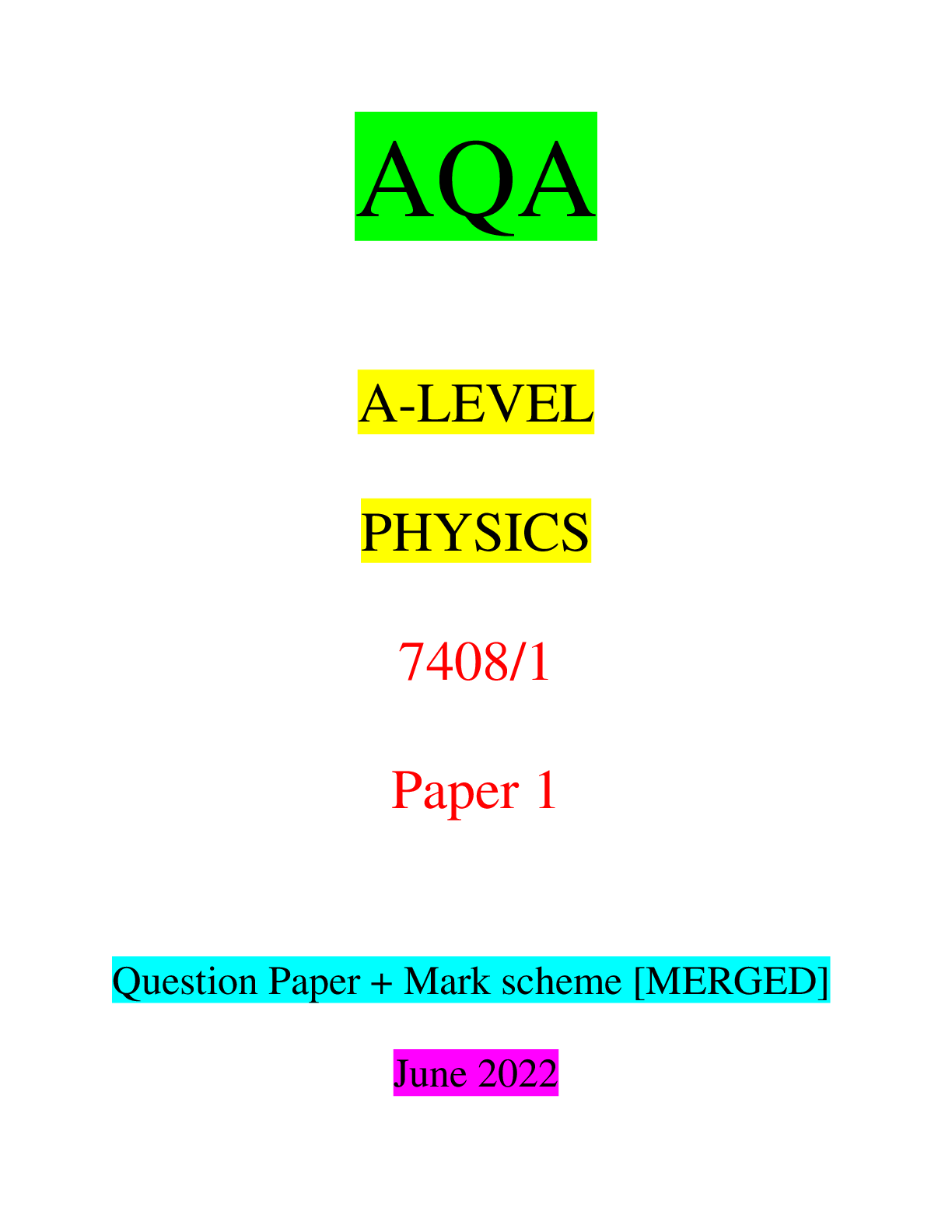
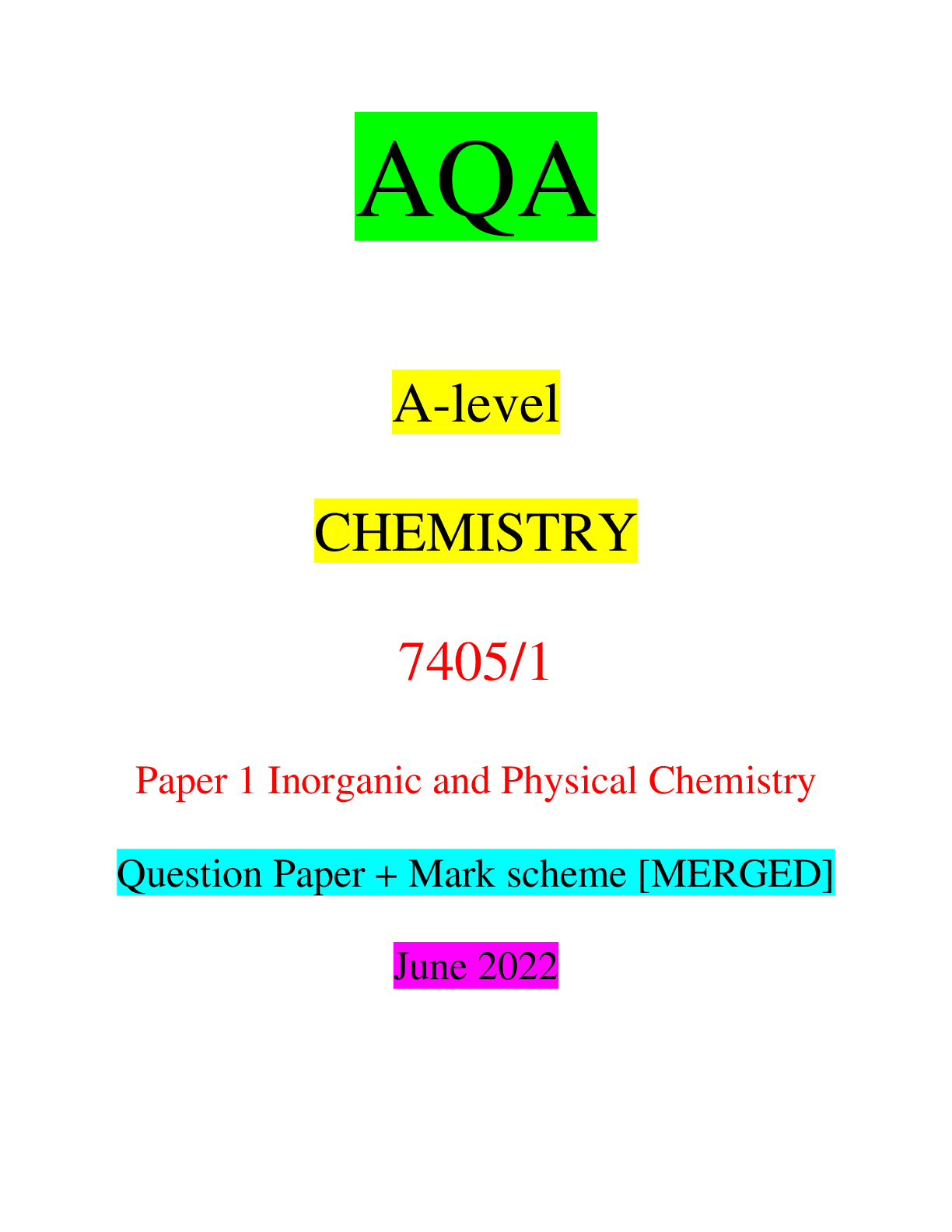


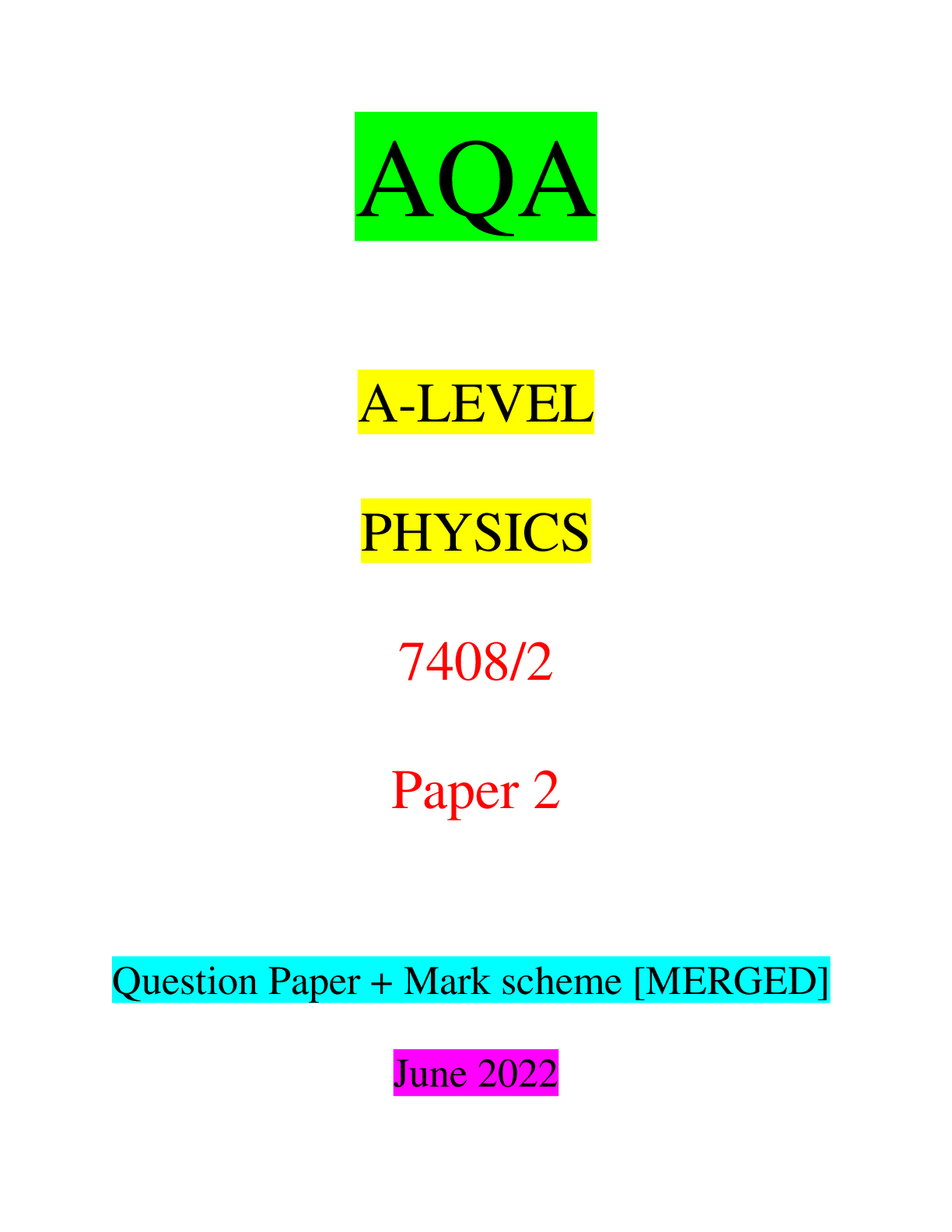
.png)
.png)
.png)
.png)
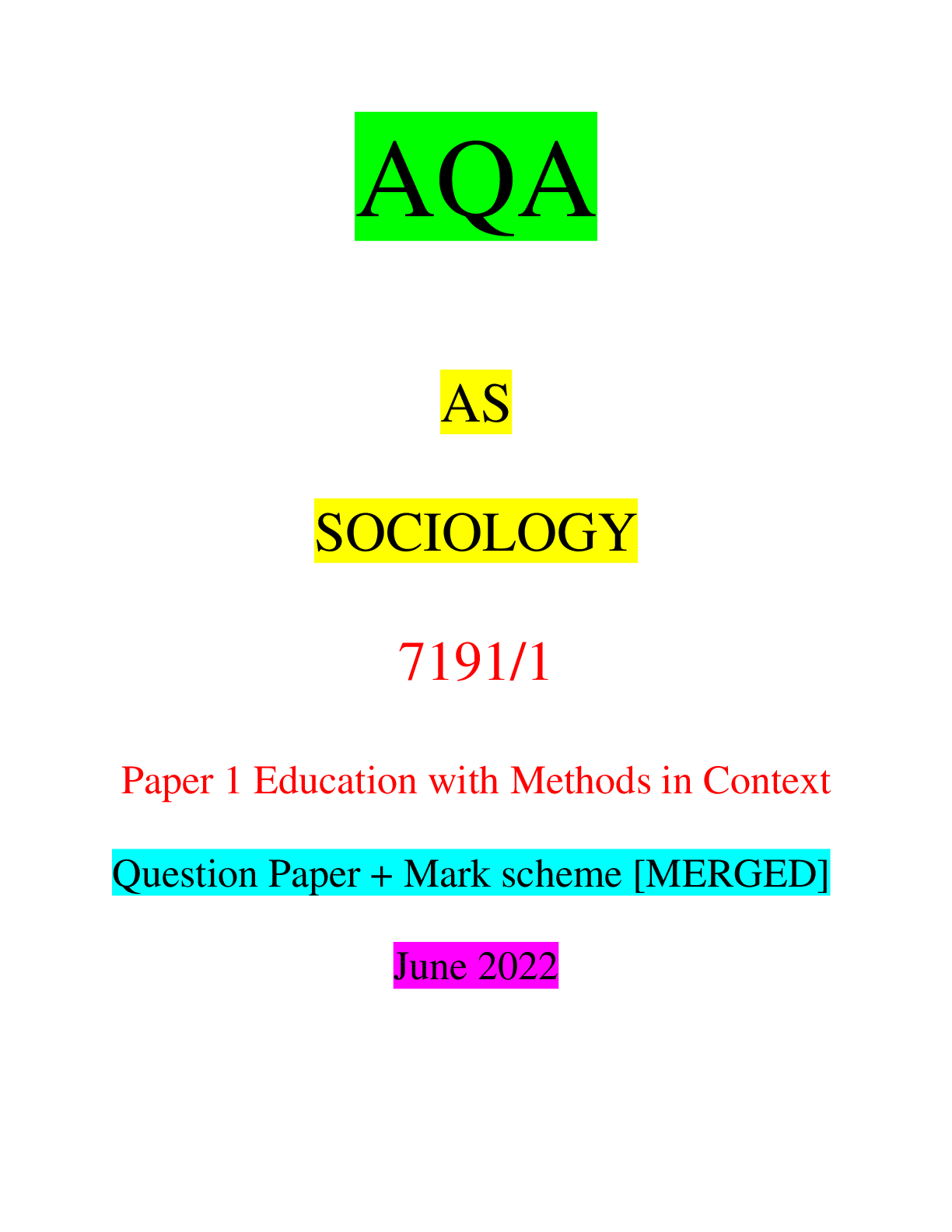
.png)
.png)
.png)
.png)
.png)
.png)
.png)
.png)
.png)
.png)
.png)
.png)
.png)
.png)
.png)

